Chicago River Cruise – Architecture Abounds
This is my final post from the November 2024 road trip to Arizona and back and the way things are going in MAGA land, maybe the last ever from there. In the previous two posts we visited Gateway Arch National Park in St. Louis and then Abraham Lincoln’s home and tomb in Springfield, Illinois. After leaving Springfield we drove to Chicago for a three night stay at the J.W.Marriott. A few years earlier while on a solo visit to Chicago I had visited Frank Lloyd Wright’s studio and home in the posh suburb of Oak Park and wrote this post about the experience. Alison and I repeated that visit on our first day in the city and found things much as they had been on my first visit. If you have any interest in architecture I highly recommend taking the time to visit Oak Park and see first hand some of the works of America’s most celebrated architect. On the second day we continued with the theme by taking a Chicago River cruise and found that to be another must do in this city duly famous for its architecture. Here’s why it’s more than worth your time and money to see the city from the Chicago River.
History of the Chicago River
Even though it’s only 156 miles (251 kms.) long, the Chicago River is one of the most important in the United States. First of all it provided the name for America’s Second City, the Algonquian word ‘shikaakwe’, meaning place of the wild onions, morphing into Chicago on the tongues of early French explorers. Secondly, it provided an almost direct link to the Mississippi River system by way of the Chicago Portage which had been used for millennia by the many Indigenous people who inhabited the Great Lakes area. Then the United States got their hands on it and in 1848 built a canal connecting the two rivers. As if that wasn’t enough, in 1900 a project involving new canals and locks managed to actually reverse the flow of the Chicago River. Water that once flowed into Lake Michigan and eventually into the Atlantic Ocean, now flowed out of it to end up in the Gulf of Mexico (not America). The Chicago Sanitary and Ship Canal, as the new project was named, was built so that the sewage that had been discharged into the river for decades, would not contaminate the drinking water supply that was coming from the same place in Lake Michigan at the mouth of the river. So now the sewage flowed west along with the discharge from the city’s infamous meat packing plants, making the Chicago River one of the most disgusting in the country up until the 1990’s when the pollution was finally ended and the river allowed to recover. Now it is not only a popular spot for river cruises, but also for kayaking, canoeing, fishing and bird watching. You can also take a boat all the way from the east coast to the Gulf of Mexico by way of the Chicago River.
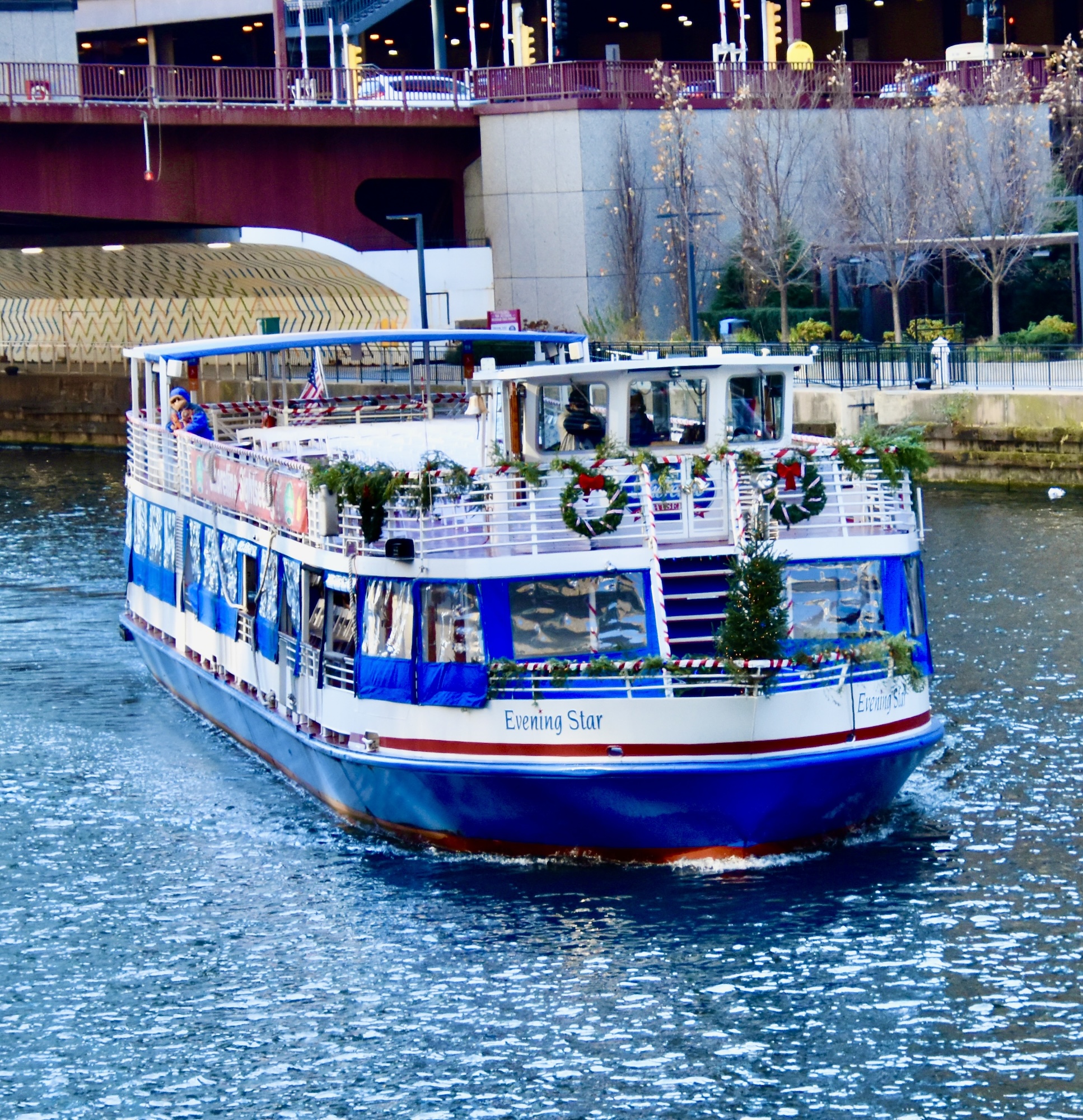
There are a number of companies offering Chicago River cruises and I suspect they all offer mostly the same itinerary. We chose the one hour architecture tour offered by Shoreline Sightseeing departing from Michigan Avenue. It was a blustery cold day in Chicago and it was nice to be able to get warmed up below decks every 20 minutes or so, but that aside, it was a wonderful excursion, looking up at some of the tallest and most famous buildings in America from water level which makes them look even grander than from street level. Let’s cast off and I’ll feature a number of the buildings roughly in the order that we saw them.
The world’s first ‘skyscraper’ was the Home Insurance Building built in Chicago in 1885. It was a then astounding ten stories tall, later expanded to twelve. What made it different was the use of a structural steel frame that made it much lighter than traditional buildings made from masonry. The architect William Le Baron Jenney had studied in Paris where he, along with classmate Gustave Eiffel, learned the techniques of using steel in the construction of large edifices. Jenney was the progenitor of the Chicago School of architecture that made the city’s architects the most sought after in the world to this very day. The world’s tallest building, the Burj Khalifa was designed by Chicago architect Adrian Smith who is currently designing an even taller one in Jeddah, Saudi Arabia.
While the Home Insurance Building is long gone, a number of even more famous early skyscrapers still stand on the banks of the Chicago River. The first of these is the iconic Wrigley Building constructed in 1920 by the man who invented Juicy Fruit gum which debuted at the Chicago World’s Fair in 1893.
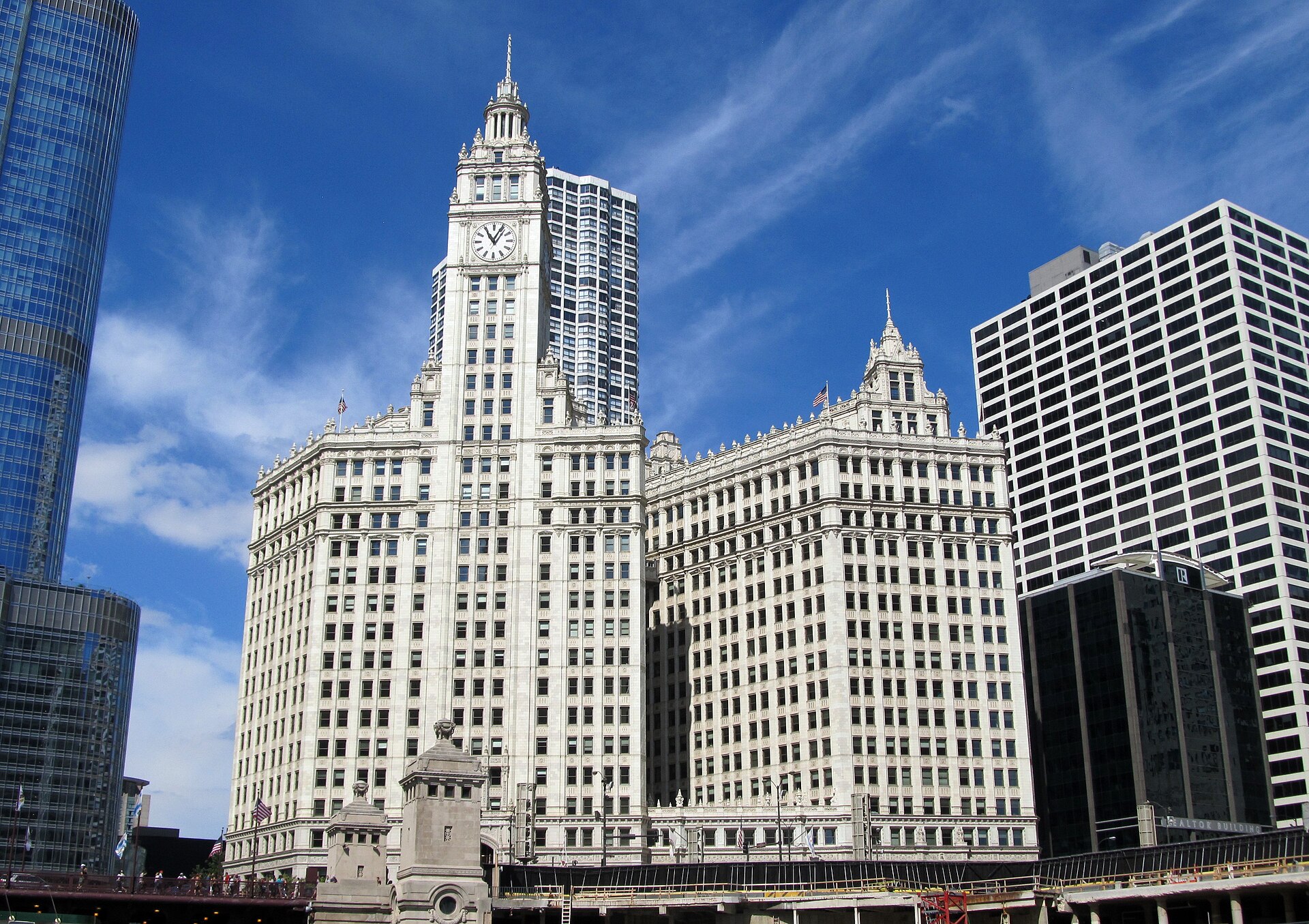
While you will get views of the Wrigley Building and others from the Chicago River such as shown in the photo above, unless you have a wide angle lens, you won’t be able to get the whole building in one shot.
The Wrigley Building is actually two buildings connected by a third story bridge. Its most famous feature is the clock tower on the south tower that was based on La Giralda that stands beside the Cathedral of Seville. By coincidence, I had this view of the real La Giralda earlier in 2024 from the roof of the Inglaterra Hotel in Seville.
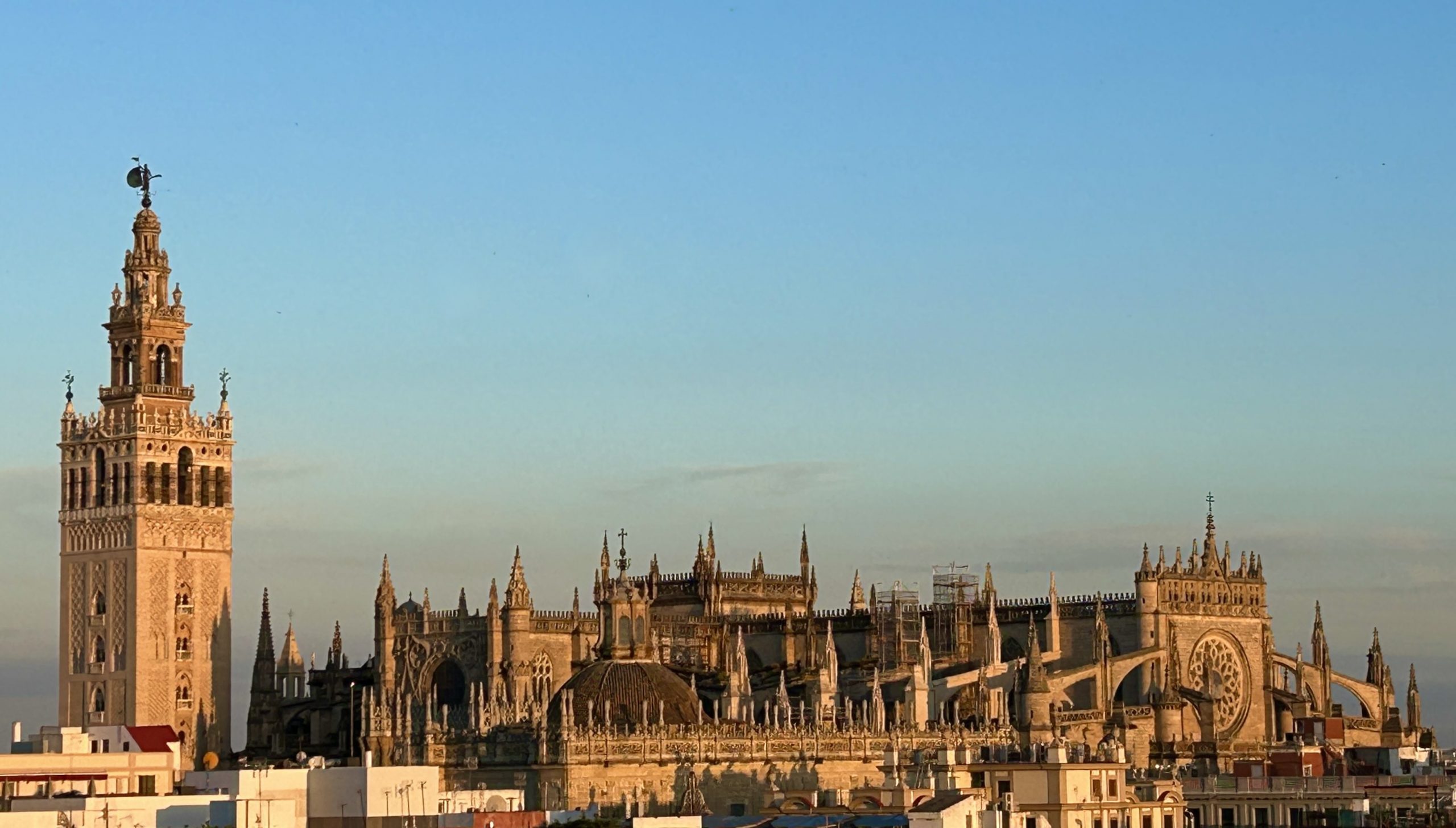
What made the Wrigley building so famous, aside from the clock tower, was the use of white terra cotta tiles that made the building literally gleam with brightness. The current owners have made sure that these tiles are kept spotlessly clean so that their effect remains as strong today as when it was first opened. BTW the Wrigley Building was the first air-conditioned office building in the world.
Directly opposite the Wrigley Building is the equally iconic Tribune Tower, which was the end result of a worldwide contest by the Chicago Tribune to build the ‘most beautiful building in the world’. The winning entry came not from Chicago, but the New York firm of Howells and Hood who went all in on the neo-Gothic look.
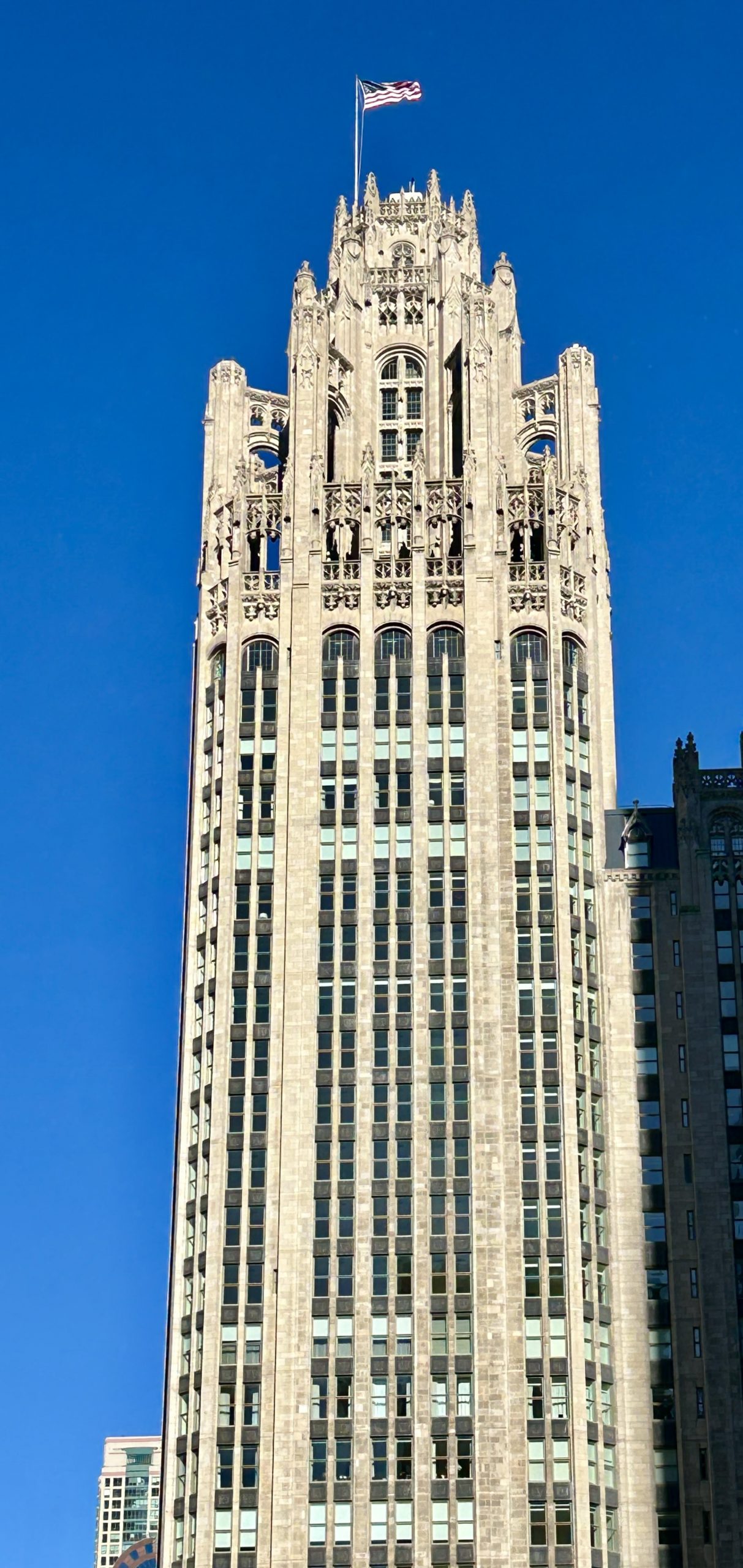
I wouldn’t call it anything close to the most beautiful building on earth, but it is impressive. Here’s a photo I took showing the tops of both the Wrigley Building and the Tribune Tower. It was really these two buildings that put Chicago on the map in terms of being a city serious about its architecture. Few companies today would shell out for the purely decorative adornments that make these two so immediately recognizable.
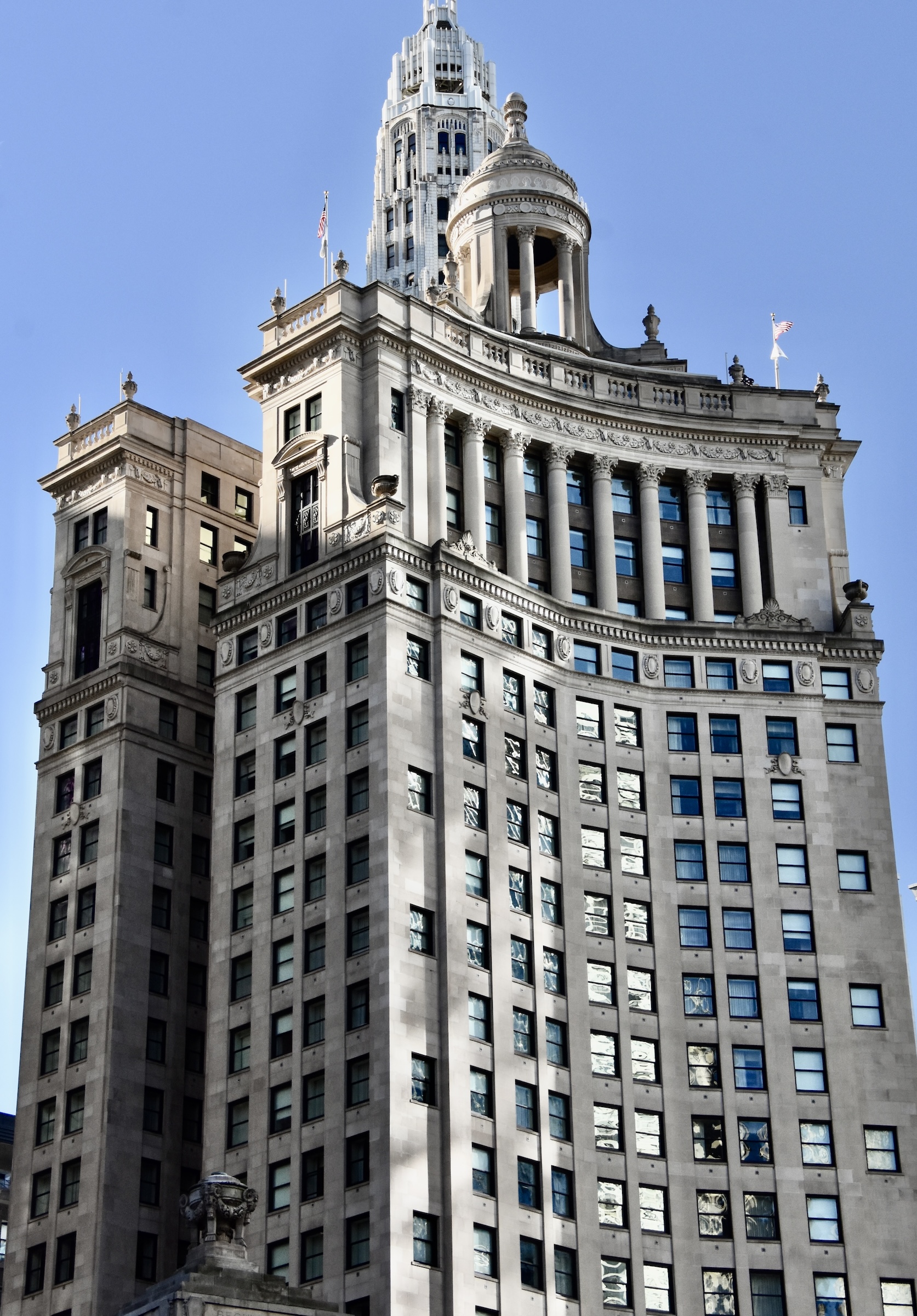
I debated not showing this next building for obvious reasons, but it is the second tallest building in Chicago and I have to admit it is attractive, far nicer than Trump Tower in NYC. That’s all I’ll say about it.
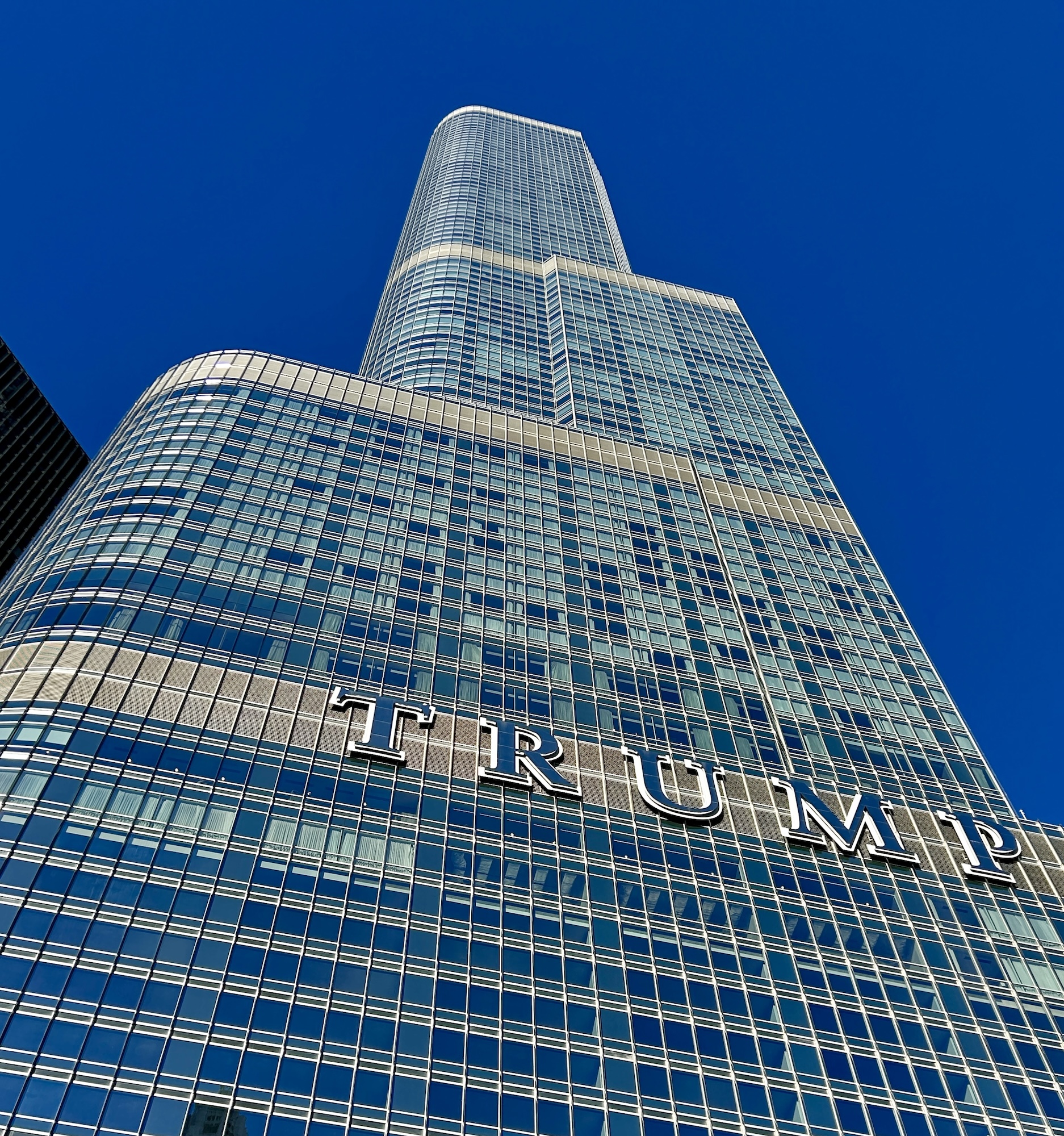
Not far further down the Chicago River are another set of world famous structures, Marina City by Chicago architect Bertrand Goldberg who was a student of the Bauhaus movement in Germany, working for a time with famed modernist Mies van der Rohe in Germany. When the Nazis drove van der Rohe out of Germany he emigrated to the United States and in particular Chicago from where he designed many of the cities most notable buildings. Torontonians will know him for the massive TD Complex in that city.
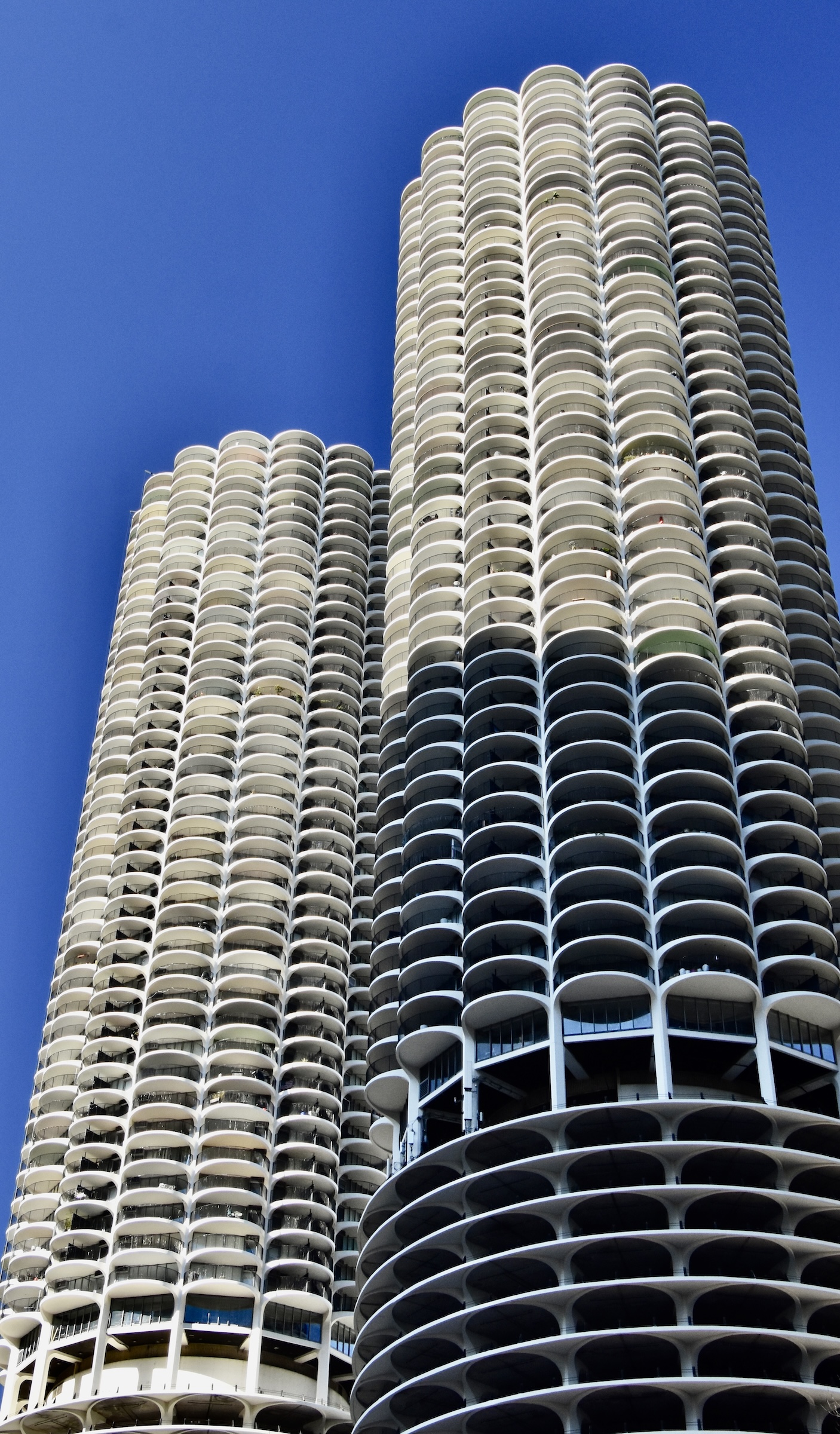
Completed in 1963 Marina City has two identical 65 story towers that at the time they were built were the tallest reinforced concrete buildings in the world and the tallest residential buildings. Their appearance is completely unique and they are often compared to corn cobs. Designed as a ‘city within a city’ with virtually all amenities needed to survive in what was a decaying city core in post-war Chicago, Marina City is credited with being the complex that started to end the ‘white flight’ from inner cities and began the urban renaissance that continues to this day.
What I find really remarkable about Marina City is that the first 19 floors (yes 19!) are parking spaces that have no substantial railings so that it looks like you could just accidentally just back out of them and plunge into the river. Here is a closer look. I suppose that’s why it’s valet parking only. How long would it take to bring your car to you from the 19th story and how dizzy would the driver be?

Next up on this Chicago River cruise is the Mercandise Mart, opened in 1930 by the Marshall Field company and at the time with four million square feet of useable space, the largest building in the world. Designed to bring together all the architectural, trades and interior design wholesalers in the country under one roof it operated that way for many decades. Years ago I went inside and wandered around unmolested, but unable to buy anything because none of it was retail, just mile after mile of wholesalers. That has changed since it was sold in 1998 by the Kennedy family (yes those Kennedys) who owned it for over 40 years and it was said to be the family’s last active business.
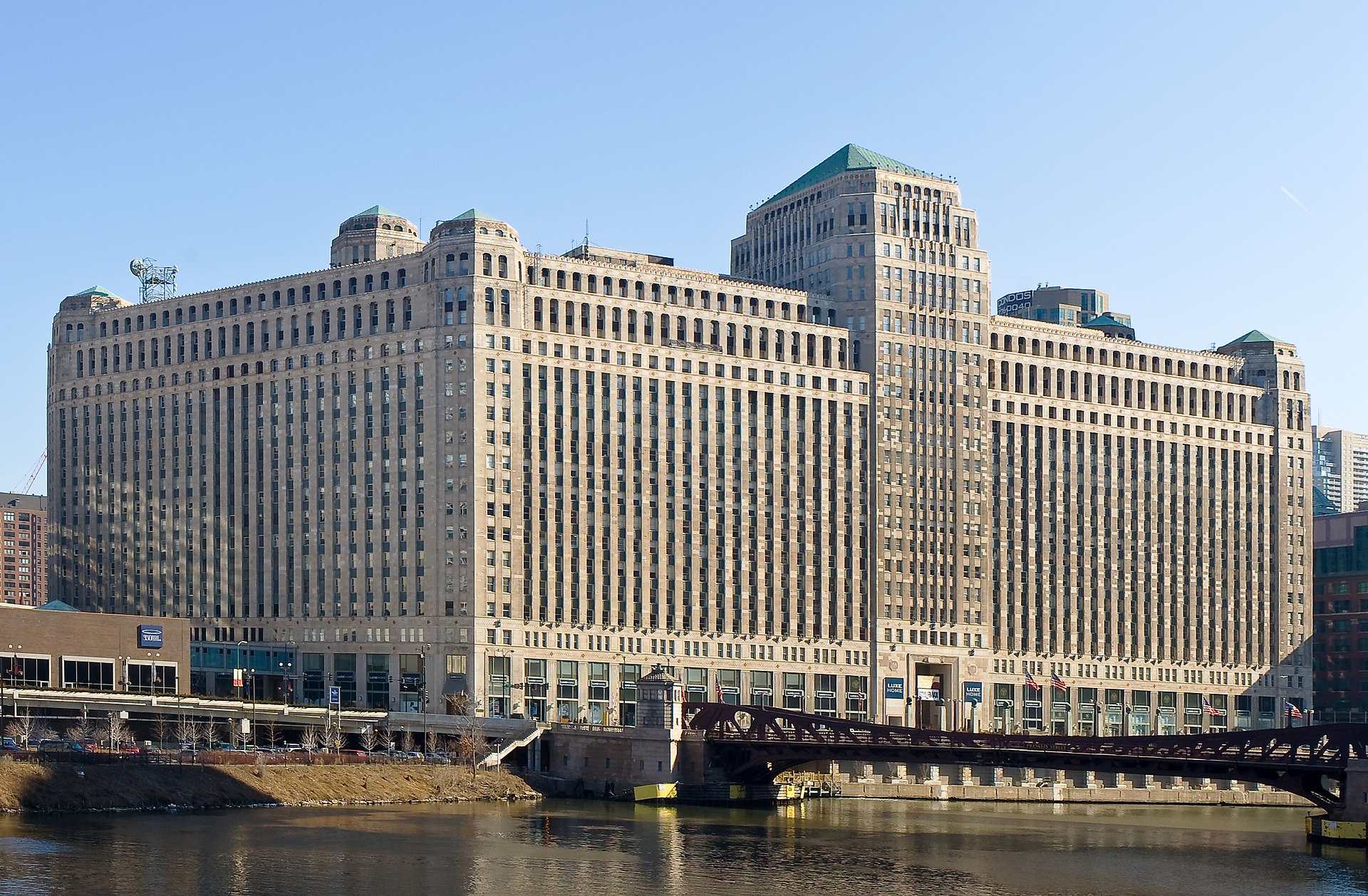
Not far past Marina City the Chicago River bends and you come upon this scene of seemingly all glass buildings known as the Wolf Point Complex. As you can see it was a bright sunny day and it really made this complex of buildings on both sides of the river shine like the chrome on a 1960’s Cadillac. Only completed in 2003, the Wolf Point Complex was built on land owned by the Kennedy family and spearheaded by Christopher Kennedy, son of RFK and brother to the imbecilic RFK Jr.
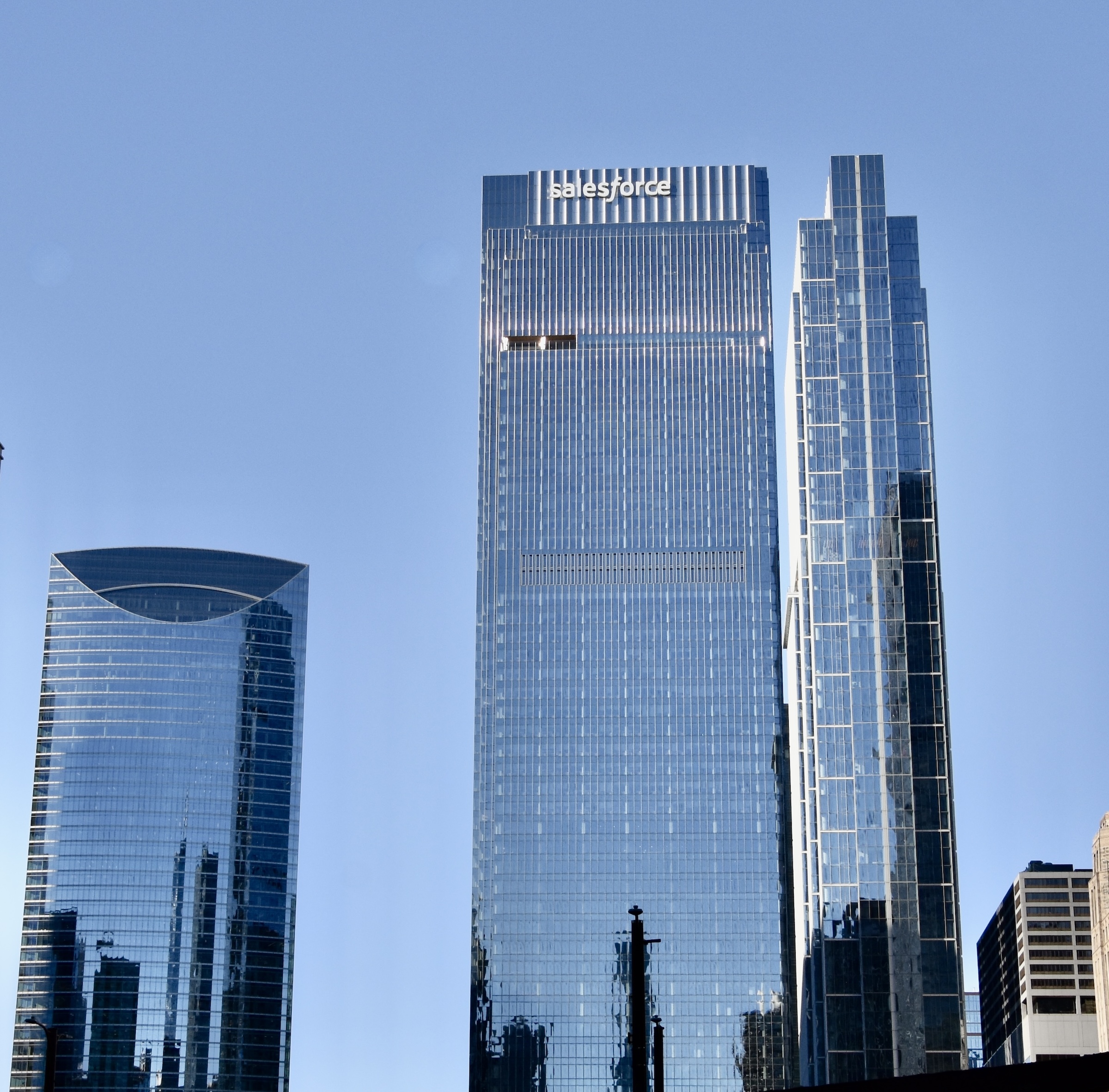
Not far past here the Evening Star does a u-turn on the Chicago River and you start to head back toward Lake Michigan.
From this new vantage point you get a look at another of Chicago’s most famous buildings, the Sears Willis Tower. That’s it on the left.
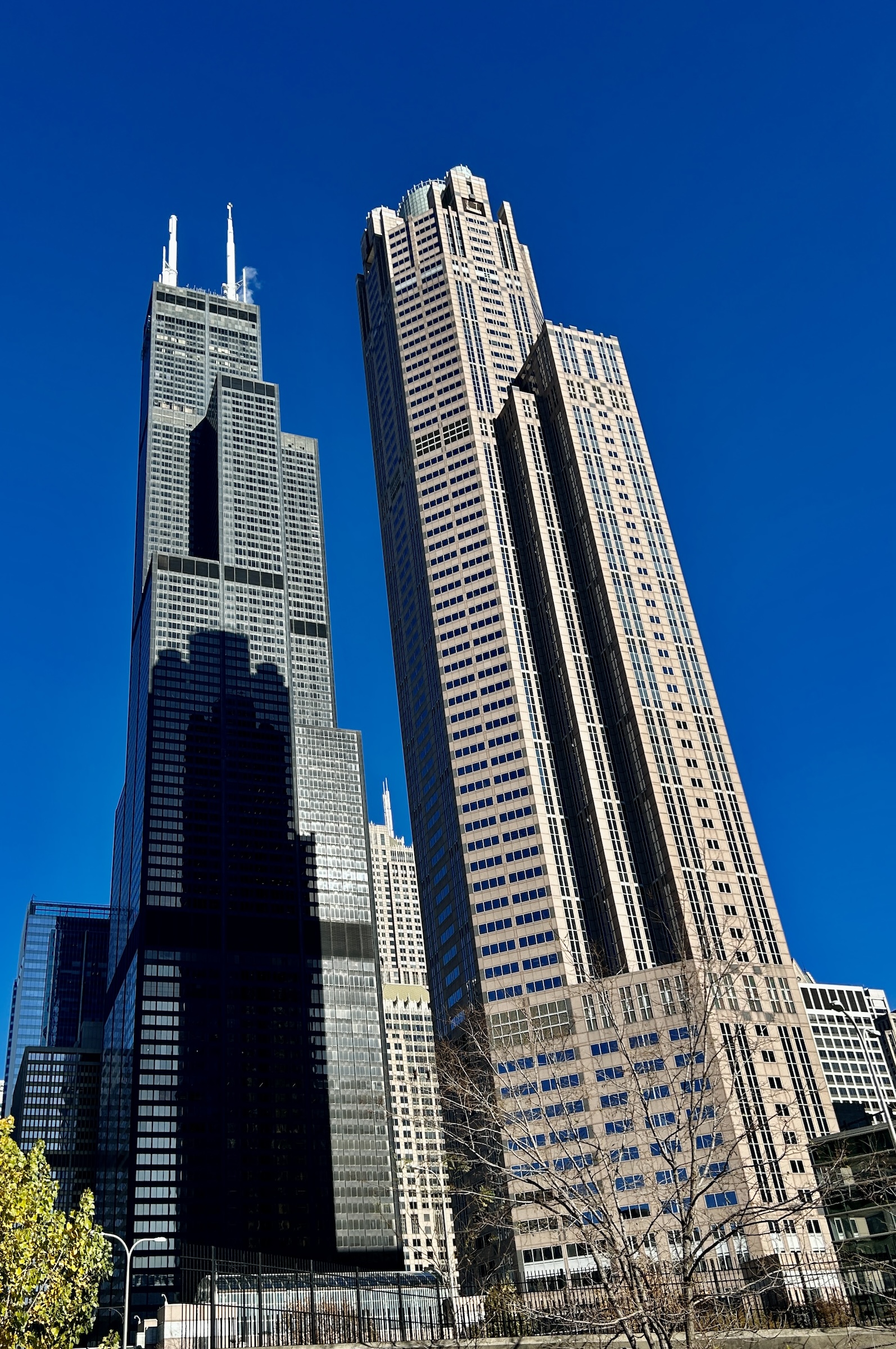
Completed in 1973 and originally named the Sears Tower, a moniker that has stuck with it, at 110 stories and 1,451 feet (442 metres) it was for twenty-five years the tallest building in the world. Now it’s merely 23rd, but for a while, after knocking off the World Trade Center, which only two years earlier had bested the seemingly unbeatable Empire State Building, the Sears Tower was the talk of the country. I know I was impressed and made the visit to the observatory at the top some years ago while in the city for a football trip. When it was dethroned by the Petronas Towers in Kuala Lumpur in 1998 it marked the end of US dominance in skyscrapers and given what is happened in places like Dubai and Saudi Arabia, it seems unlikely the title will ever return.
The Franklin Center, beside the Sears Willis Tower, at over 1,000 feet, is not too shabby either.
This is the third tallest building in Chicago and unlike the Sears Willis Tower it is still a world champ. This is the St. Regis Building and at 1,198 feet (365 metres) it’s the tallest building ever designed by a woman.
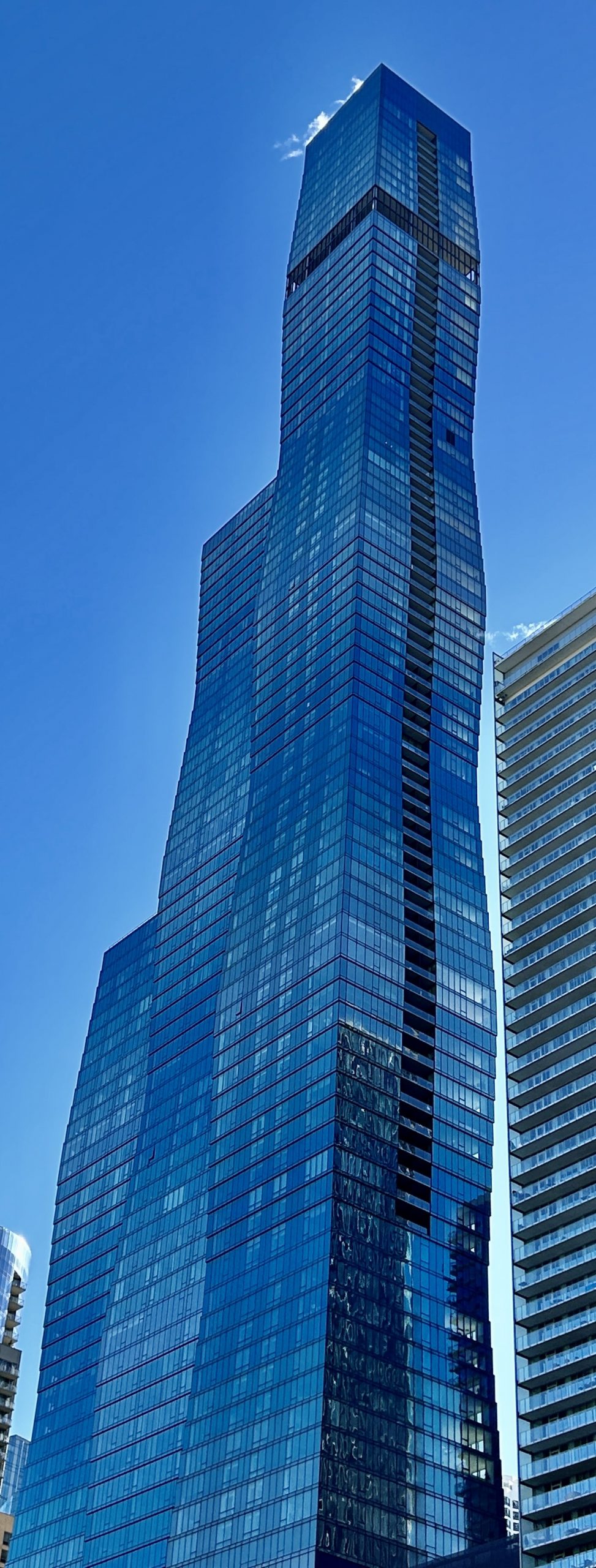
Architect Jeanne Gang literally outdid herself in the design of the St. Regis Building; before then she held the women’s title for the Aqua building which is nearby and in my opinion a more striking looking structure. What Ms. Gang has done is prove that women are as capable as men in designing high rise buildings and once again it is the city of Chicago that is at the forefront of world architecture.
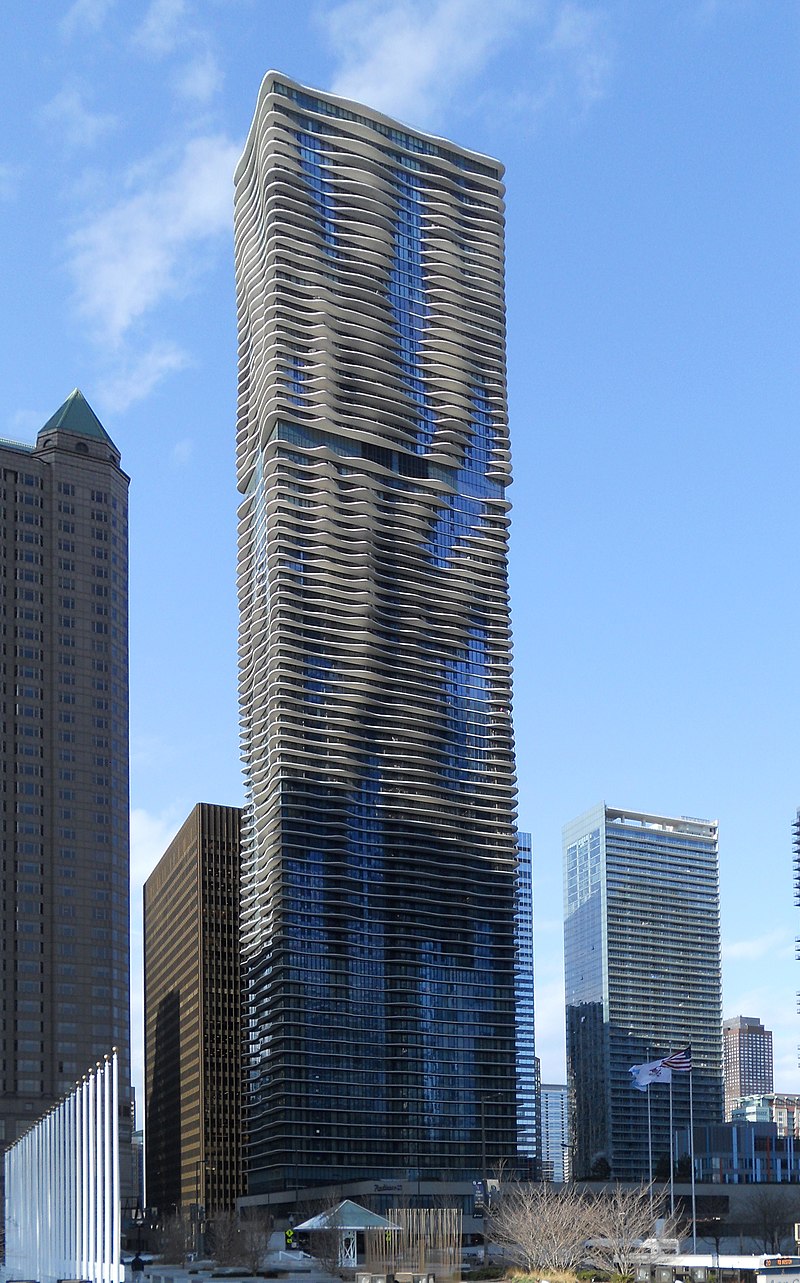
Just past the St. Regis Building the Chicago River ends and Lake Michigan begins. On the north bank sits the solitary and quite impressive Lake Point Tower. Built in 1968 by students of Mies van der Rohe, it was for a brief time, the highest apartment building in the world.
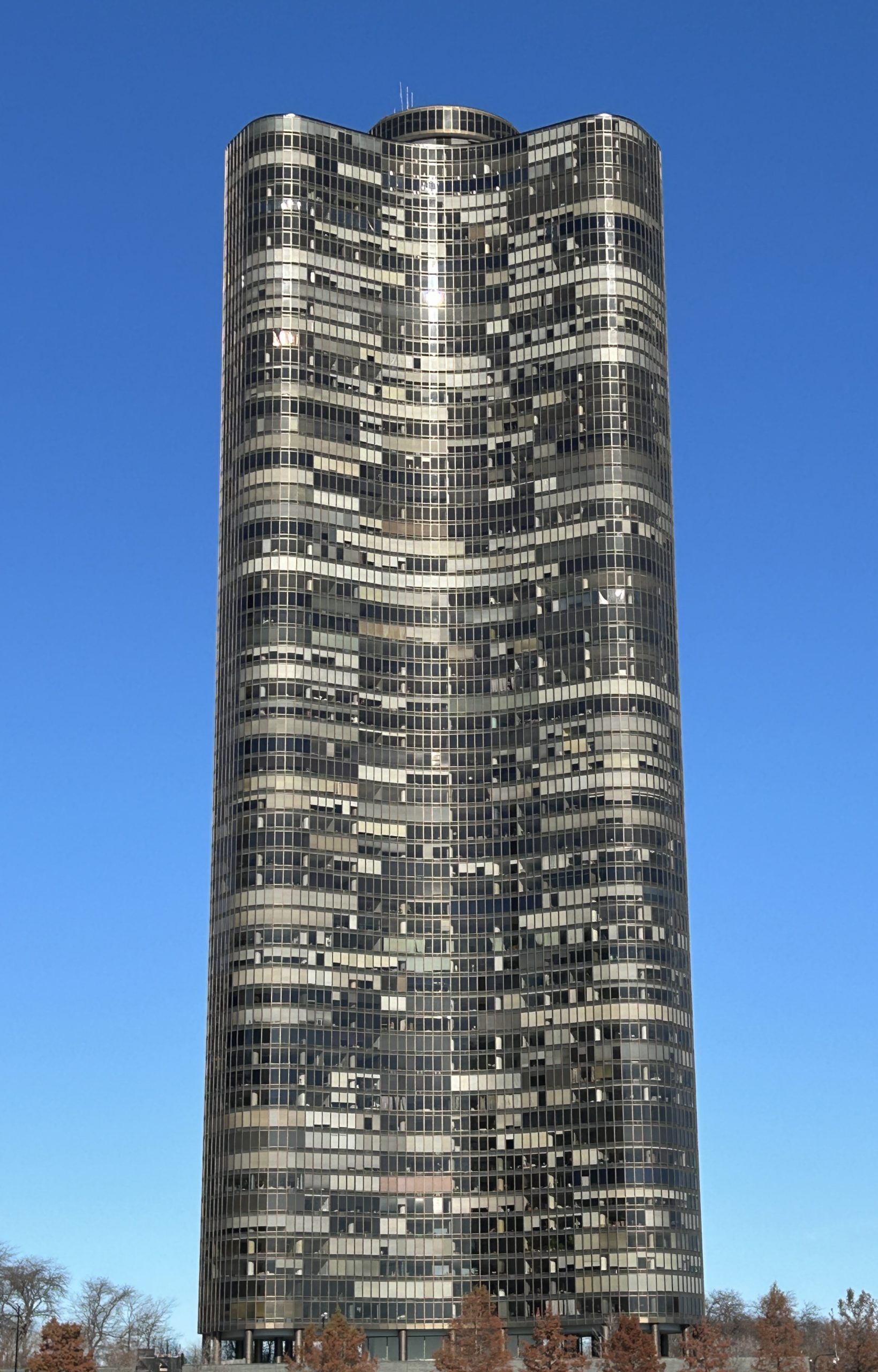
The Evening Star then makes its way far enough out on Lake Michigan to get a panoramic view of the Chicago skyline.
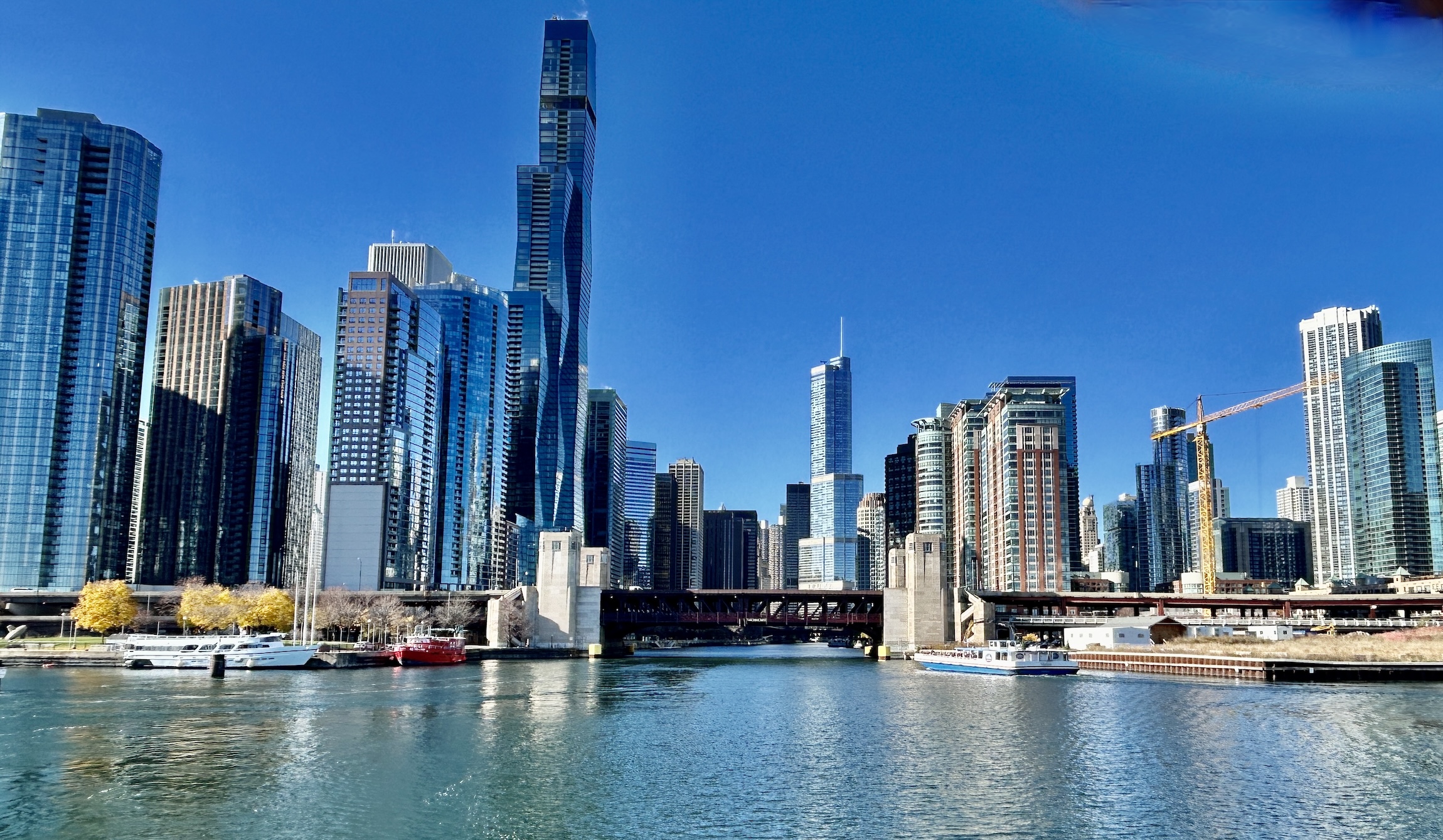
It’s also a great spot to get your picture taken to remember the architecture of this remarkable city.
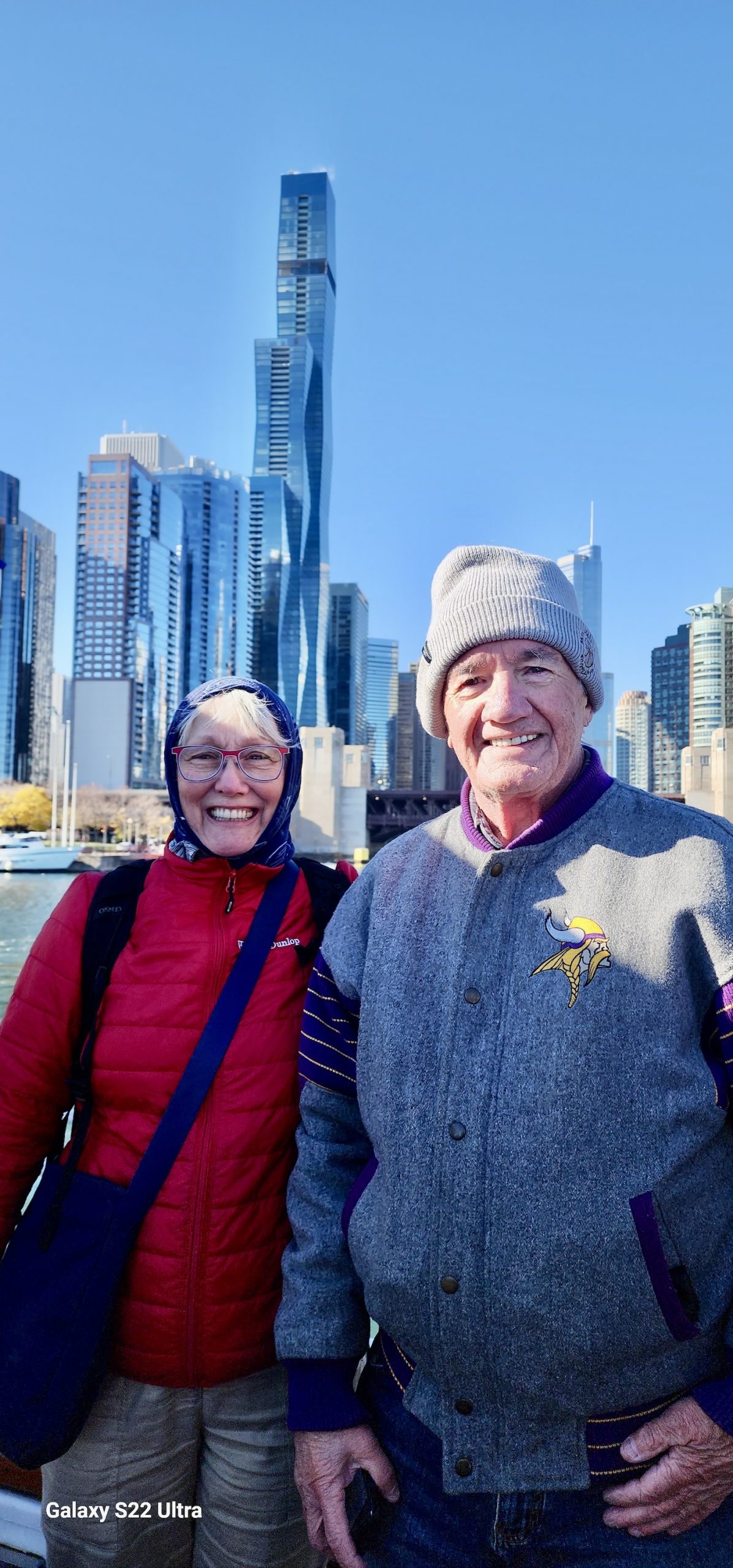
With that we return to the Chicago River and our place of embarkation.
Whether or not I’ll ever return to the United States is a very real question for now. All I can do is hope for the best and prepare for the worst.

